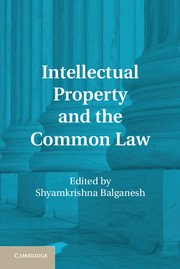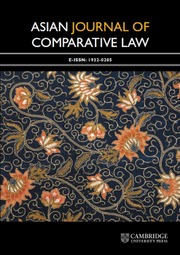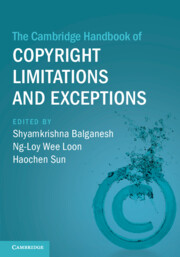Intellectual Property and the Common Law
In this volume, leading scholars of intellectual property and information policy examine what the common law – understood as a method of reasoning, an approach to rule making, and a body of substantive law – can contribute to discussions about the scope, structure, and function of intellectual property. The book presents an array of methodologies, substantive areas, and normative positions, tying these concepts together by looking to the common law for guidance. Drawing on a range of interdisciplinary ideas and principles that are embedded within the working of common law, the volume shows that the answers to many of modern intellectual property law's most puzzling questions may be found in the wisdom, versatility, and adaptability of the common law. The book argues that despite the degree of interdisciplinary specialization that the field today sees, intellectual property is fundamentally a creation of the law; therefore, the basic building blocks of the law can shed important light on what intellectual property can and should (and was perhaps meant to) be.
- Includes a group of prominent US scholars on intellectual property
- Looks to a variety of interdisciplinary perspectives, such as economics, philosophy and political theory
- Features several essays that deal with issues of current relevance of IP debates in the US and around the world
Product details
September 2013Hardback
9781107014152
576 pages
235 × 158 × 30 mm
0.9kg
5 b/w illus.
Available
Table of Contents
- Part I. Judge-Made Intellectual Property Law:
- 1. Judges and property Hanoch Dagan
- 2. Equitable intellectual property: what's wrong with misappropriation? Henry E. Smith
- 3. The mixed heritage of federal intellectual property law and ramifications for statutory interpretation Peter S. Menell
- 4. Interpretive methodology and delegations to courts: are 'common-law statutes' different? Margaret H. Lemos
- 5. Dynamic claim interpretation Dan L. Burk
- 6. Did Phillips change anything? Empirical analysis of the federal circuit's claim construction jurisprudence R. Polk Wagner and Lee Petherbridge
- 7. An empirical look at trade secret law's shift from common to statutory law Michael Risch
- 8. The impact of codification on the judicial development of copyright Christopher S. Yoo
- Part II. The Common Law Method in Intellectual Property:
- 9. Legal pragmatism and intellectual property law Thomas F. Cotter
- 10. Copyright, custom, and lessons from the common law Jennifer E. Rothman
- 11. Common law reasoning and cyber trespass Emily Sherwin
- Part III. State Intellectual Property Law:
- 12. The intellectual property clause's pre-emptive effect Jeanne C. Fromer
- 13. Trademark law's faux federalism Mark P. McKenna
- Part IV. Plural Values in Intellectual Property:
- 14. The normative structure of copyright law Shyamkrishna Balganesh
- 15. Trade secret and human freedom Madhavi Sunder
- 16. Laying bare an ethical thread: from IP to property to private law? David Lametti
- Part V. Parallels between the Substantive Common Law and Intellectual Property:
- 17. Technology and tracing costs: lessons from real property Molly Shaffer Van Houweling
- 18. Intellectual usufructs: trade secrets, hot news, and the usufructuary paradigm at common law Eric R. Claeys
- 19. The fault liability standard in copyright Steven Hetcher
- 20. The concept of 'harm' in copyright: deploying the disanalogy of trespass Wendy J. Gordon
- 21. The role of unfair competition in the common law Shyamkrishna Balganesh and Gideon Parchomovsky
- 22. The fractioning of patent law Mark A. Lemley
- 23. Permanent injunctions as punitive damages in patent infringement cases Paul J. Heald
- 24. Sequential injunctions in patent litigation: the gratuitous novelty of TiVo v. EchoStar Richard A. Epstein.





